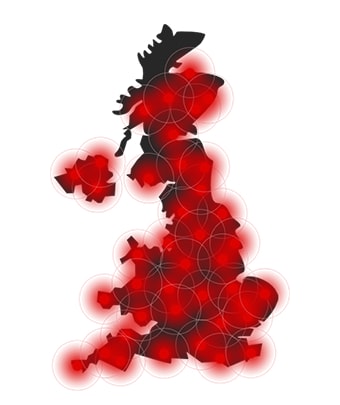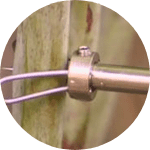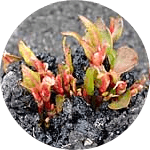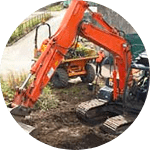Japanese Knotweed Removal & Control

The overview
Common Name: Japanese Knotweed
Latin name: Fallopia japonica
In Detail
Japanese knotweed does not spread from seeds. It spreads when moved and small pieces of plant or its roots are broken off – these will re-grow. One piece of root the size of a fingernail can produce a new plant. Pieces of plant or roots can be transported to a new location by:
- Movement of contaminated soil
- Tracked machinery picking up fragments
- Water – particularly if plant is close to river/stream
Individual plants can cover several square metres of land and are connected by an extensive rhizome network beneath the soil surface – often quoted as being 2/3 metres deep and 7 metres in all directions from surface growth. Because of this extensive root growth beneath the ground, many chemicals will not kill the plant, even when it appears to be dying back on the surface.
Who we help
We have a long track record of managing some of the most complex sites in the country and have worked with the Environment Agency on several large flood alleviation projects, as well as providing advice to the majority of house builders and developers in the UK.
Click here to view who we help







What’s the problem?
- Legal implications
- Invasive non native species
- Rapidity of growth and spread
- Damage to buildings and hard surfaces
- Does not spread by seed
- Any part of plant capable of re-growth
- Possible refusal of mortgage/insurance
What are the legal implications? *England
Possible fine or prison sentence
- You must not allow Japanese knotweed to spread onto adjacent land – the owner of that land could take legal action against you
- You must not allow or encourage the spread of Japanese knotweed – this includes moving contaminated soil from one place to another or incorrectly handling and transporting contaminated material and cuttings
- You do not need to notify anyone
- You are not obliged to remove or treat on your own land
Identification
- Fleshy red tinged roots when first breaking ground
- Large oval green heart shaped leaves
- Silver tinge to underside of leaves
- Hollow stem – bamboo like
- Begins to grow in early Spring
- Grows at a rate of 3cm per day
- Reaches height of 1.5/2m by May
- 3m by June
- Leathery leaves
- Dense clumps
- Clusters of creamy white flowers
- Dies back between September and November leaving dead brown stems
- Grows in any type of soil – no matter how poor
If you have concerns over Japanese knotweed on your land, if you are unsure of your legal responsibilities, or, if you would like a quotation for control, please contact one of our specialist surveyors. Treatment costs start at £380.00 + VAT.

Where we have worked
We operate nationwide with a Rapid Response Team on standby 7 days a week, to deal with the most urgent client enquiries.
We’re a dedicated team of professionals who share a great deal of experience. We invest heavily in the continual training of all our employees, ensuring you always have a highly qualified team working on your project with the latest industry accreditations.
Our process

1. Identify
Our first step is to identify if you have an invasive plant. For a quick ID, you can send us some photos. Alternatively, we can carry out a full site survey to confirm the extent of the infestation.

2. Solution
We will provide a range of treatment options individually tailored depending on your site requirements.

3. Quote
A detailed breakdown of costs for each phase of treatment will be provided, including on-going monitoring programmes with insurance backed guarantees.

4. Removal
Our experienced and professional in-house teams will carry out the treatment to the highest of standards to achieve full eradication. All works are carried out in accordance with the INNSA Code of Practice.

5. Treatment
A range of treatment solutions are available, from in-situ herbicide application to excavation and removal or burial. All carried out in-house by our experienced team.

